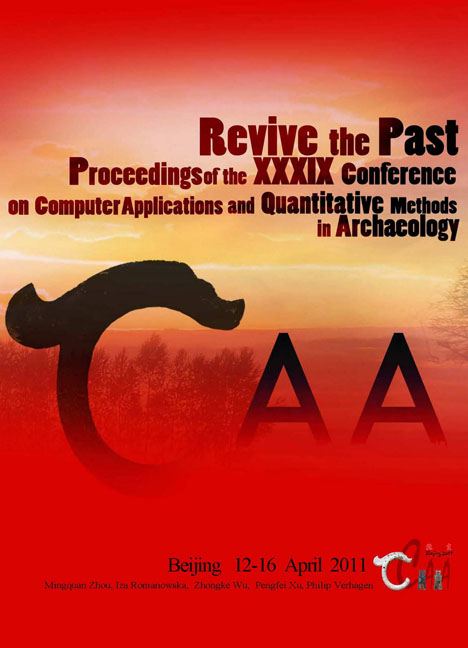 Revive the Past
Revive the Past Published online by Cambridge University Press: 23 June 2021
Abstract:
This paper aims to provide a framework for the new critical approaches in archaeological network analysis presented in the CAA 2011 Data Analysis session. It will briefly introduce the history of two network traditions that have been highly influential in archaeology: social network analysis and complex networks in physics. A review of published archaeological and historical applications follows, illustrating that, although a wide range of applications already exists, archaeologists have still to explore its full potential as a research perspective. Some relevant papers presented at the Data Analysis session are briefly described and considered in order to add original and critical approaches to an already very diverse corpus. We will argue that an awareness of the dominant network traditions, their differences and how they have been applied by archaeologists, as well as a specifically archaeological critique of adopted techniques, is a necessity for future research agendas.
Key Words: Networks, Social Networks Analysis, Complex Networks
Introduction
Relationships between people, objects and ideas mattered in the past just as they matter now and will continue to do so in the future. If we want to properly understand the structure of our datasets, the particular actions of historical individuals or the properties of past large-scale processes, the explicit study of relationships is crucial. It is our belief that a networks approach holds great potential for this purpose. The session entitled ‘Connecting the dots: critical approaches in archaeological network analysis’ held at CAA 2011 in Beijing as part of the ‘Data Analysis’ session aimed to provide a multidisciplinary discussion platform to explore this potential. This paper gives an overview of archaeological applications of network analysis, as well as the multi-disciplinary traditions that have been most influential to these applications. A brief introduction of the papers presented in that session illustrates that new critical approaches of networks have much to offer to our discipline.
The Old Science of Networks
Network-based approaches consist of a set of theories, models and applications developed and often differently applied in diverse disciplines. Whilst networks were originally the territory of mathematicians in graph theory (Biggs et al. 1976; Bollobas 1998; Harary 1969; Harary et al. 1965; West 1996), sociologists have developed a strong tradition of social network analysis in the latter half of the previous century (Barnes and Harary 1983; Freeman 2004; Granovetter 1973; Wasserman and Faust 1994).
To save this book to your Kindle, first ensure [email protected] is added to your Approved Personal Document E-mail List under your Personal Document Settings on the Manage Your Content and Devices page of your Amazon account. Then enter the ‘name’ part of your Kindle email address below. Find out more about saving to your Kindle.
Note you can select to save to either the @free.kindle.com or @kindle.com variations. ‘@free.kindle.com’ emails are free but can only be saved to your device when it is connected to wi-fi. ‘@kindle.com’ emails can be delivered even when you are not connected to wi-fi, but note that service fees apply.
Find out more about the Kindle Personal Document Service.
To save content items to your account, please confirm that you agree to abide by our usage policies. If this is the first time you use this feature, you will be asked to authorise Cambridge Core to connect with your account. Find out more about saving content to Dropbox.
To save content items to your account, please confirm that you agree to abide by our usage policies. If this is the first time you use this feature, you will be asked to authorise Cambridge Core to connect with your account. Find out more about saving content to Google Drive.